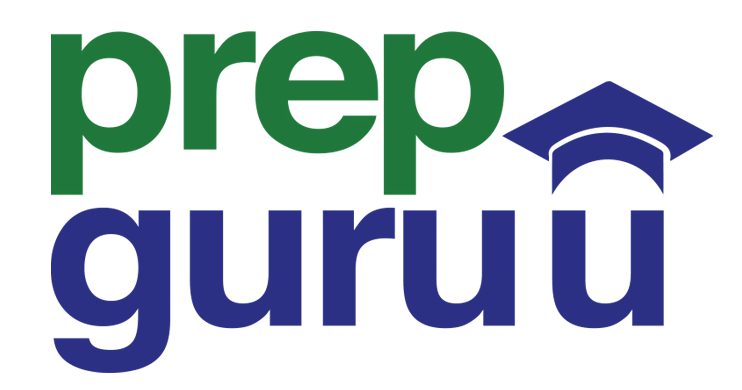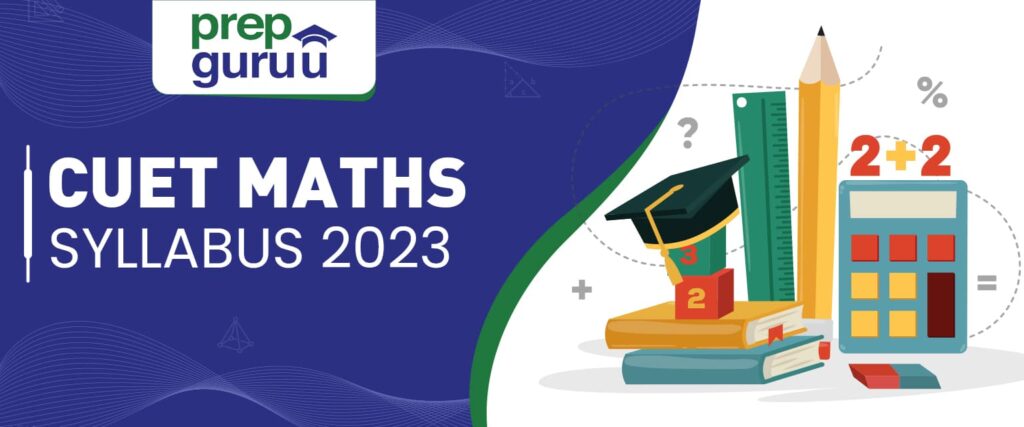The CUET Exam, commonly known as the Central Universities Common Entrance Test, is a common entrance exam for India’s Central Universities. The National Testing Agency (NTA) administers a computer-based entrance exam. Candidates seeking admission to any Bachelor’s or Master’s degree program must pass the CUET Exam.
One of the core subjects in this exam is Mathematics. So, before you kickstart your preparation, ensure to know the latest CUET Mathematics syllabus 2023 and prepare with the best CUET coaching. This article has mentioned exactly that, along with the pattern, most important topics, expert preparation tips, and much more.
Quick Overview of the Latest CUET Mathematics 2023 Syllabus
CUET will be a centralized entrance exam designed to provide all prospective students with an equitable and common opportunity to gain admission to the country’s most prestigious universities/colleges.
The CUET score will be used to select students and then offer them admission. The exam will be administered in CBT (Computer-based Test) mode, with MCQ-type questions. A thorough study plan and preparation strategy are necessary to score well and assure admission to the college of your choice.
Also read: CUET Physics Syllabus With Exam Pattern & Most Important Questions
CUET Maths Exam Pattern
The National Testing Agency (NTA) released the CUET Mathematics exam pattern. Here is the overview with details:
| Particulars | Exam Pattern Details |
|---|---|
| Name of Examination | CUET |
| Full Name | Common Universities Entrance Test |
| Languages | CUET exam 2023 will be conducted in 13 languages (English, Hindi, Telugu, Assamese, Punjabi, Gujarati, Tamil, Kannada, Urdu, Odis, English, Malayalam, Odia, Bengali, and Marathi) |
| Total number of Questions to be Answered in Mathematics | 65 questions |
| Total marks in Mathematics | 325 |
| Duration of Mathematics Exam | 45 minutes |
| Question Type | Objective Type (MCQs) |
| Examination Mode | Computer Based Test |
| Negative Marking | Yes |
| Frequency of Exam | Once in a year |
| Marking Scheme | For each correct answer there is 5 marks |
| For each incorrect answer, there are -1 marks | |
| For each unanswered question, there are 0 marks |
Latest CUET Maths Syllabus 2023
The Mathematics syllabus is considered the core of the preparation strategy since students can only create their study plan if they thoroughly analyze the syllabus.
The Mathematics syllabus for CUET 2023 is divided into sections:
- Section A
- Section B1
- Section B2
Mathematics Section A
-
Algebra
The basic idea of matrices, equality of matrices, symmetric and skew-symmetric matrices and finding the transpose of a matrix, determinants, inverse of a matrix, and solving simultaneous equations are included under the algebra section.
-
Calculus
First and second-order derivatives, tangents and normals, functions, maxima, and minima cover the calculus section.
-
Applications of Integrations
Indefinite integrals, definite integrals, and application of both definite and indefinite integrals as the area under the curve.
-
Differential Equations
Degree and order of differential equations, formulating differential equations and solving them.
-
Probability distribution
Random variables, the expected value of a random variable, estimating standard deviation and variance of a random variable, and binomial distribution are included under probability distribution.
-
Linear programming
Formulation of a linear programming problem, graphical method of solution for two variables, identifying the feasible and infeasible regions, and finding optimal solutions.
Also read: NTA CUET Preparation Book 2022(Most Recommended )
Mathematics Section B1
Unit I: Relations and Functions
Relations and functions are included in Reflexive, transitive, symmetric, and equivalence relations, one-to-one mapping, composite functions, and binary operations.
Inverse trigonometric Functions: Finding range, domain, principal value, and constructing graphs of inverse functions are some topics included in inverse trigonometric functions.
Unit II: Algebra
- Matrices: Basic concepts of matrices, notation, order of operations, zero matrices, and the transpose of a matrix are covered in this chapter. The chapter also includes properties of addition and multiplication of scalar matrices, non-commutativity of matrix multiplication, and row and column operations knowledge.
- Determinants: Important properties of determinants, estimating cofactors, and applying properties of determinants in estimating an area of a triangle are included in the first section of the chapter.
The second part of the chapter deals with the adjoint and inverse of a square matrix, checking for consistent and inconsistent solutions to linear equations and using the inverse method for solving linear equations in more than two variables.
Unit III: Calculus
Continuity and Differentiability:
- A derivative of composite functions
- The derivative of inverse functions
- The application of the chain rule method
- The finding of the derivative of an implicit function
The latter sections of the chapter include exponential and logarithmic functions, logarithmic differentiation, derivatives of parametric functions, Rolle’s and Lagrange’s Mean Value Theorem, and their applications.
- Application of Derivatives: The first part deals with topics like estimating the rate of change of increasing and decreasing functions, concepts about tangents and normals, and maxima and minima functions, including the first and second derivative tests. The latter part of this chapter includes some advanced-level problem sums on tangents and normals.
- Integrals: The integration method is considered the inverse of the differentiation method. Integration by substitution and parts are the two different methods of integration that can be applied as per convenience. This chapter also includes the primary properties of definite integrals and their applications.
- Applications of the Integrals: This chapter includes the application of integrals in estimating the area of circles, ellipses, and parabolas.
- Differential Equations: The first part of the differential equations chapter deals with a simple definition, degree, order of equations, and formation of differential equations whose solutions are mentioned. The second part includes the separation of variables method, solving homogeneous differential equations of the first order, and finding solutions to linear differential equations.
Also read: CUET Eligibility criteria
Unit IV: Vectors and 3-D Geometry
- Vectors: Magnitude and direction of the vector, direction cosines of the vector, collinearity of vectors, position vector of a point, and addition and multiplication of a vector by a scalar are covered in the first section of the chapter.
The next section of the chapter includes dot products of vectors, problem sums on the projection of a vector on a straight line, cross products of vectors, and scalar triple products.
- 3-D Geometry: Three-dimensional geometry includes estimating ratios, finding the shortest distance between any two lines, forming cartesian and vector equations of a line, and estimating the angle between two lines, planes, and between a line and a plane.
Unit V: Linear Programming
The first section of Linear programming includes optimization techniques, formulating linear programming problems mathematically, and applying graphical methods for finding solutions to equations with two variables.
The second section includes identifying the feasible and infeasible solutions and finding optimal solutions up to three non-trivial constraints.
Unit VI: Probability
The first part of the chapter includes the multiplication theorem on probability, conditional probability theorem, and Bayes theorem.
The second part of the chapter contains a random variable and its probability distribution, repeated independent trials, and binomial distribution. The third part of the chapter deals with problem sums which require knowledge of the first two parts of the chapter.
Mathematics Section B2
Unit I: Quantification and their Applications
- Modulo Arithmetic
- Congruence Modulo
- Mixture and allegation
- Numerical problem sums
- Boats and streams
- Pipes and cisterns
- Races and games
- Partnership
- Inequalities
Unit II: Algebra
- Matrices
- Transpose of a matrix, symmetric and skew-symmetric matrix
Unit III: Calculus
- Higher-order derivatives
- Marginal Cost and Marginal revenue
- Maxima and minima
Unit IV: Probability distributions
- Probability distribution
- Mathematical distribution
- Variance
Unit V: Index numbers and time-based data
- Index numbers
- Construction of index numbers
- Application of time-reversal test
Unit VI: Probability
- Population and sample
- Parameter and statistics and statistical inferences
Unit VII: Time series
- Components of time series
- Using time series analysis for univariate data
Unit VIII: Financial Mathematics
- Perpetuity, sinking funds
- Bond valuation methods
- Estimating EMI
- Calculating depreciation through a linear method
Unit IX: Linear programming
- Introduction
- Steps to form linear programming problems
- Distinguishing between different types of linear programming problems
- Graphical method for finding solutions
- Shading feasible, bounded, and infeasible regions
Also read: How to Clear CUET in 1st Attempt?
How to Prepare for Maths Syllabus for CUET 2023? (Expert Tips)
1. Curate Timetable for Disciplined Routine
Any preparation requires a disciplined and routined approach. This can only be accomplished by creating a proper itinerary based on the length of the CUET mathematics syllabus and the time available.
The timeline must ensure that you cover the entire course promptly and have adequate time afterward to practice and revise. Once you’ve created your schedule, you must stick to it with discipline and timeliness.
2. A Good Frasp of Latest Syllabus
To study for the CUET exam, one needs to know more than simply the syllabus. A full understanding entails identifying and prioritizing chapters based on their value. You must recognize your skills and flaws and attempt to improve them.
This will improve your clarity and smooth your approach. At all costs, you must keep your preparation syllabus-specific and goal-oriented.
3. Time Management and Consistency
You must look after these two things. The majority of your chances of success are determined by how well you manage your time and stick to your schedule. Any aspirant would benefit from time management and constancy in the effort.
As a result, your approach will be more disciplined and goal-oriented. If you can ensure these two things, your chances of success will increase automatically.
4. Revision and Practice Mock Test
This is the final and most important stage that should be noticed. This will sharpen you in every way and help you prepare well for the exam. Once you have completed the syllabus, revise wisely and review the relevant sections several times.
Aspirants must practice CUET mock tests regularly. This allows you to manage your time effectively in exams while familiarizing yourself with the exam environment.
CUET Maths Mock Test (Highly Recommended)
Mock tests for CUET help in improved knowledge of the question paper and a more in-depth analysis of the examination and candidates’ weaknesses and strengths. By taking as many Mock Tests as feasible, a candidate can get a better rank in CUET 2023.
FAQs Related to CUET Exam 2023
1. What are some good CUET Mathematics books?
- Lucent’s Complete Mathematics
- Quantitative Aptitude for Competitive Exams by R.S. Sharma
- Shortcuts in Quantitative Aptitude for Competitive Exams by Disha Experts
- Test of Arithmetic by Arihant
2. When will CUET 2023 be held?
The exam will likely take place in July of 2023. CUET 2023 registrations are underway and will last until 24 June 2023.
3. How many times is the CUET exam conducted in a year?
It is hosted only once a year.
4. What is the deadline for CUET Exam 2023 applications?
The last date to apply for CUET Exam 2023 is 24 June 2023.
Wrapping Up:
By following the latest syllabus of CUET Mathematics for 2023, you can be on your path to the right preparation. We hope the things mentioned above help you to revamp your strategy of preparation and be able to crack the upcoming exam.


